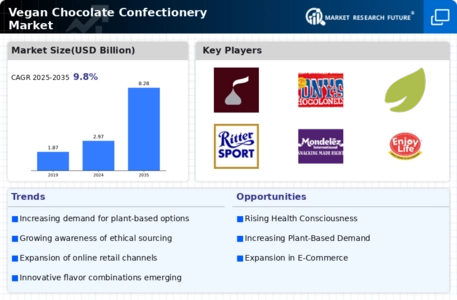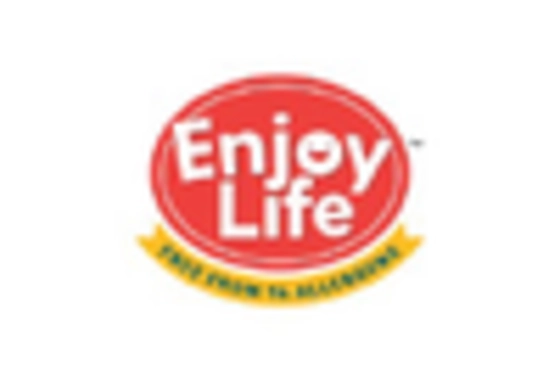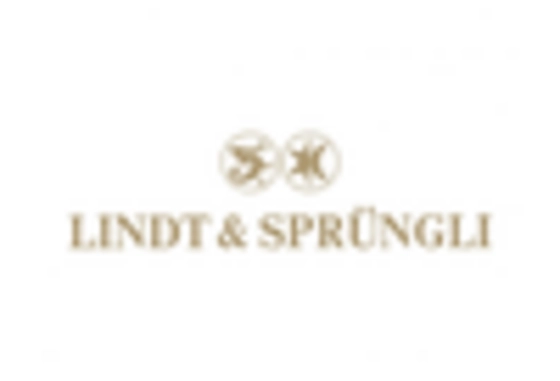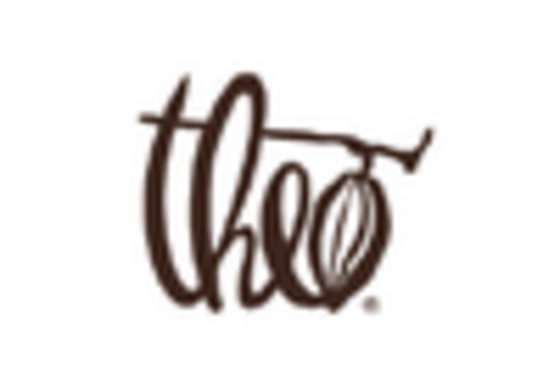Expansion of Retail Channels
The Vegan Chocolate Confectionery Market is benefiting from the expansion of retail channels, which enhances accessibility for consumers. The proliferation of health food stores, specialty shops, and online platforms has made it easier for consumers to find and purchase vegan chocolate products. Recent data suggests that online sales of vegan confectionery have increased by over 30% in the past year, indicating a shift in shopping habits. This increased availability not only caters to the growing demand but also encourages impulse purchases among consumers. As more retailers recognize the potential of the Vegan Chocolate Confectionery Market, the variety and distribution of products are likely to expand, further driving market growth.
Innovative Marketing Strategies
The Vegan Chocolate Confectionery Market is witnessing a transformation due to innovative marketing strategies employed by brands. Companies are increasingly utilizing social media platforms and influencer partnerships to reach a broader audience. This approach appears to resonate particularly well with younger consumers, who are more inclined to engage with brands that reflect their values. Additionally, storytelling and transparency in sourcing practices are becoming essential components of marketing campaigns. As brands effectively communicate their commitment to quality and sustainability, they are likely to foster brand loyalty among consumers. This strategic focus on marketing is expected to play a crucial role in the continued growth of the Vegan Chocolate Confectionery Market.
Health Benefits of Dark Chocolate
The Vegan Chocolate Confectionery Market is also being propelled by the recognized health benefits of dark chocolate, which is often a key ingredient in vegan chocolate products. Research indicates that dark chocolate is rich in antioxidants and may contribute to improved heart health. As consumers become more health-conscious, they are increasingly seeking out products that offer both indulgence and health benefits. The growing awareness of these advantages is likely to enhance the appeal of vegan chocolate confectionery, as it is perceived as a guilt-free treat. This trend suggests that the Vegan Chocolate Confectionery Market could see sustained growth as more consumers incorporate these products into their diets.
Rising Demand for Plant-Based Products
The Vegan Chocolate Confectionery Market is experiencing a notable surge in demand for plant-based products. This trend is largely driven by an increasing number of consumers adopting vegan and vegetarian lifestyles, which has been reported to grow by approximately 20% annually. As more individuals become aware of the health benefits associated with plant-based diets, the market for vegan chocolate confectionery is likely to expand. Furthermore, the rise in lactose intolerance and dairy allergies among consumers has prompted a shift towards dairy-free alternatives. This growing consumer base is not only seeking indulgent treats but also prioritizing health-conscious options, thereby propelling the Vegan Chocolate Confectionery Market forward.
Environmental Awareness and Ethical Consumption
The Vegan Chocolate Confectionery Market is significantly influenced by heightened environmental awareness among consumers. As concerns regarding climate change and animal welfare continue to rise, many individuals are opting for products that align with their ethical values. The market for vegan chocolate is projected to grow as consumers increasingly seek out brands that prioritize sustainable sourcing and eco-friendly practices. Research indicates that approximately 70% of consumers are willing to pay a premium for products that are environmentally friendly. This shift towards ethical consumption is likely to drive innovation within the Vegan Chocolate Confectionery Market, as brands strive to meet the expectations of socially conscious consumers.


















Leave a Comment